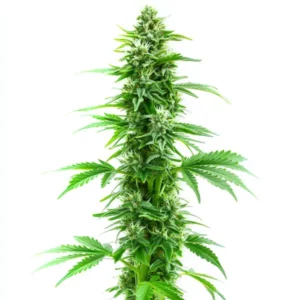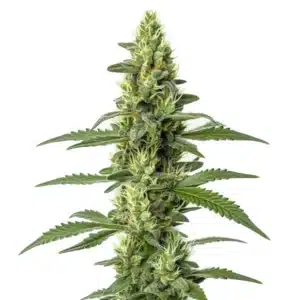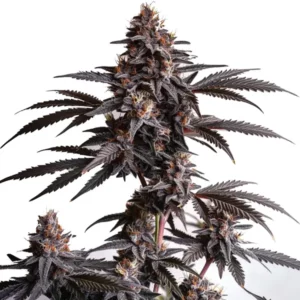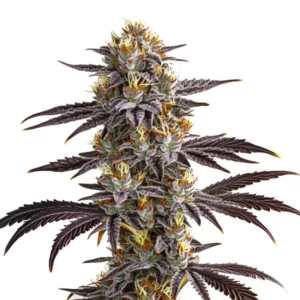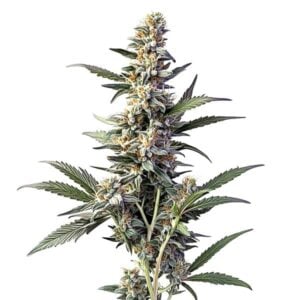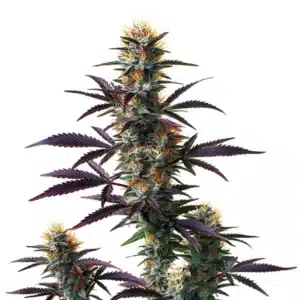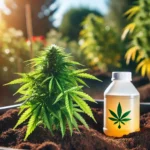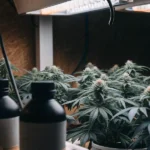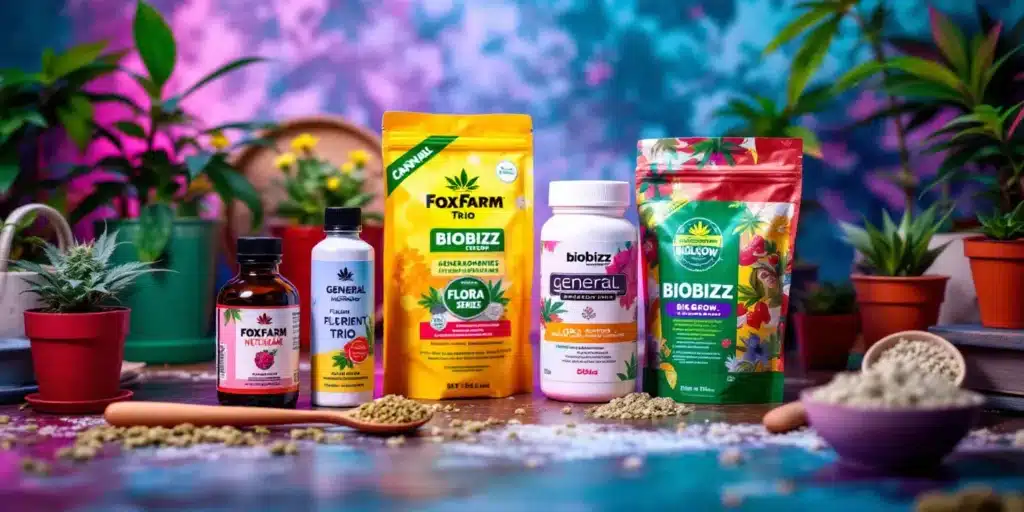
The Best Fertilizer for Autoflower Plants
Autoflower cannabis plants have revolutionized the way we think about home cultivation. With their rapid growth cycle and ability to thrive in various conditions, they offer a straightforward option for both beginners and seasoned growers. However, one of the most critical elements for success is finding the best fertilizer for autoflower plants. This guide dives into everything you need to know about fertilizers, covering nutrients, types, application methods, and tips to ensure your plants thrive.
Autoflower Nutritional Needs
Autoflower cannabis plants have unique nutritional requirements. Their fast growth and compact size mean they have different needs compared to photoperiod strains. Let’s explore why specialized fertilizers are essential and what makes autoflowers so unique.
Recommended Strains
Sweet Island Skunk Fast Version
|
|
THC | 18% - 23% (Medium) |
|
|
Type | Feminized |
|
|
Yield | Medium |
|
|
Phenotype | 60% Indica / 40% Sativa |
Skywalker Auto
|
|
THC | 18% - 22% (Medium) |
|
|
Type | Autoflowering |
|
|
Yield | Low |
|
|
Phenotype | 85% Indica / 15% Sativa |
The Importance of Rapid Growth
Autoflowers complete their life cycle in a short span of 8 to 12 weeks. This rapid pace means they transition quickly from seedling to vegetative growth and then to flowering. Each stage demands a precise balance of nutrients to support robust growth and maximize yields. For example, nitrogen is critical during the vegetative stage, while phosphorus and potassium take the spotlight during flowering.
Compact Root Systems
Due to their smaller size, autoflowers also have smaller root systems compared to photoperiod plants. This makes them more susceptible to nutrient imbalances or overfeeding. Fertilizers designed specifically for autoflowers provide the right nutrient ratios, making it easier for the plant’s roots to absorb what they need without overwhelming them.
Promos & Deals
Key Nutrients Required for Autoflower Growth
To achieve healthy, thriving autoflowers, you need to understand the essential nutrients your plants require. These nutrients are divided into three main categories: macronutrients, secondary nutrients, and micronutrients.
Macronutrients: NPK (Nitrogen, Phosphorus, Potassium)
- Nitrogen (N): This is the primary nutrient needed during the vegetative stage. Nitrogen supports the development of lush, green foliage and helps the plant build a strong foundation for future flowering.
- Phosphorus (P): As plants transition to the flowering stage, phosphorus becomes critical for root development and bud formation. It ensures the production of dense, resinous flowers.
- Potassium (K): Potassium is essential throughout the plant’s life cycle. It improves overall health, enhances water absorption, and boosts the plant’s resistance to stress and diseases.
Secondary Nutrients: Calcium, Magnesium, and Sulfur
Secondary nutrients play a supporting role in plant growth. Calcium strengthens cell walls, magnesium is crucial for photosynthesis, and sulfur aids in protein synthesis. A high-quality fertilizer will include these elements to maintain balance and prevent deficiencies.
Micronutrients: Iron, Zinc, Manganese, and More
Though needed in smaller quantities, micronutrients are vital for specific biochemical processes. For example, iron is essential for chlorophyll production, while zinc contributes to enzyme activity and growth regulation. The best fertilizer for autoflower plants incorporate these trace elements to ensure complete nutrition.

Choosing the Right Fertilizer for Autoflowers
Selecting the right fertilizer is a critical decision that impacts the health and yield of your autoflowers. The market offers a wide range of options, each suited to different growing conditions and preferences. To simplify the process, let’s delve deeper into the categories and characteristics of fertilizers for autoflowers.

Best Fertilizer for Autoflower – Organic Fertilizers
Organic fertilizers are a natural choice for growers who prioritize sustainability and soil health. These fertilizers are derived from materials like compost, manure, and plant-based sources. Unlike synthetic options, organic fertilizers release nutrients slowly, improving soil microbiology over time. Popular examples include:
- Worm Castings: Packed with essential nutrients and beneficial microbes, worm castings improve soil texture and nutrient availability.
- Bat Guano: High in phosphorus, bat guano is excellent for the flowering stage, promoting robust bud formation.
- Bone Meal: A great source of calcium and phosphorus, bone meal enhances root strength and flower production.
Organic fertilizers are ideal for soil-based grows where long-term soil health is a priority. However, they require careful application to ensure nutrients are released in alignment with the plant’s needs.
Best Fertilizer for Autoflower – Synthetic Fertilizers
Synthetic fertilizers are engineered to deliver precise nutrient ratios directly to your plants. They are available in liquid or powder form and are often preferred for their immediate effects. Key benefits of synthetic fertilizers include:
- Controlled Nutrient Delivery: Synthetic fertilizers allow growers to fine-tune feeding schedules based on the plant’s stage of growth.
- Ease of Use: Pre-mixed formulas simplify the feeding process, reducing the risk of nutrient imbalances.
- Compatibility with Hydroponics: For growers using hydroponic systems, synthetic fertilizers provide the clean, soluble nutrients required.
Despite their efficiency, synthetic fertilizers can lead to nutrient build-up if overused, so careful monitoring of dosage and pH levels is crucial.
Best Fertilizer for Autoflower – Slow-Release Fertilizers
For those seeking a low-maintenance approach, slow-release fertilizers are a convenient option. These products gradually release nutrients over an extended period, reducing the need for frequent applications. They’re particularly useful for outdoor grows where consistent feeding can be challenging. However, slow-release fertilizers may not offer the level of precision needed for maximizing yields, especially in fast-growing autoflowers.
When and How to Fertilize Autoflowers
Proper timing and application are just as important as choosing the best fertilizer for Autoflower. Overfeeding or underfeeding can lead to nutrient burn, deficiencies, or stunted growth. Understanding the plant’s life cycle is key to providing the right nutrients at the right time.
Fertilizing During the Vegetative Stage
During the first three weeks, autoflowers focus on building strong roots and foliage. Use a fertilizer rich in nitrogen to support this growth. Start with a diluted solution about half the recommended strength to avoid overwhelming the young plant. Gradually increase the dosage as the plant matures.
Transitioning to the Flowering Stage
Around week four, your autoflowers will begin to transition into flowering. At this stage, phosphorus becomes the dominant nutrient, along with a moderate amount of potassium. Nitrogen levels should be reduced to prevent excessive vegetative growth, which can detract from bud production.
Final Weeks and Flushing
During the final weeks of flowering, focus on boosting potassium and phosphorus to encourage bud swelling and resin production. In the last week before harvest, flush your plants with plain water to remove excess nutrients. This improves the flavor and smoothness of the final product.
Avoiding Common Fertilizing Mistakes
Even with the best fertilizer for autoflower, mistakes can happen, and they can significantly impact your plants’ health and productivity. By understanding and avoiding these common errors, you can ensure your autoflowers thrive.
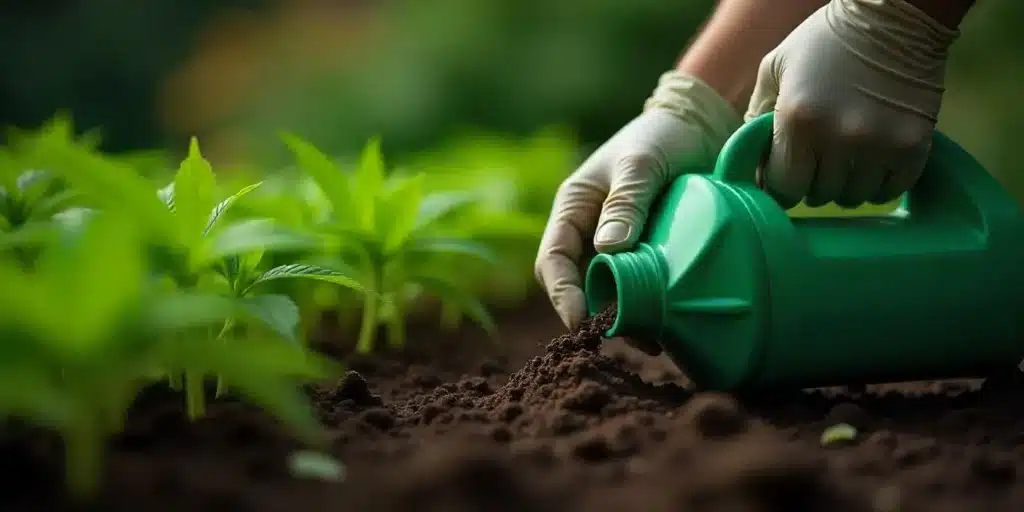
Overfeeding Your Plants
One of the most frequent mistakes is overfeeding. Autoflowers are particularly sensitive to nutrient concentrations, and excessive feeding can lead to nutrient burn. This condition is characterized by yellowing or browning leaf tips, slowed growth, and in severe cases, plant death. To avoid overfeeding:
- Start Slow: Always begin with half or even a quarter of the recommended fertilizer dose, especially for seedlings and young plants.
- Monitor Your Plants: Keep a close eye on your plants for signs of nutrient overload, such as dark green leaves or leaf tip discoloration.
- Flush When Necessary: If you notice signs of overfeeding, flushing your plants with clean, pH-balanced water can help remove excess nutrients.
Underfeeding and Nutrient Deficiencies
While overfeeding is a common issue, underfeeding can also pose problems. Nutrient deficiencies can stunt growth, reduce yields, and make your plants more susceptible to pests and diseases. Symptoms of deficiencies include pale leaves, weak stems, and poor bud development. To prevent underfeeding:
- Understand Plant Needs: Learn the specific nutrient requirements for each growth stage and adjust your feeding schedule accordingly.
- Use High-Quality Fertilizers: Invest in best fertilizer for autoflower that provide a balanced mix of macronutrients, secondary nutrients, and micronutrients.
- Observe Regularly: Inspect your plants daily for any signs of nutrient deficiencies, and adjust feeding as needed.
Neglecting pH Levels
The pH level of your growing medium plays a critical role in nutrient absorption. If the pH is too high or too low, your plants may experience nutrient lockout, where essential nutrients become unavailable. To maintain optimal pH levels:
- Test Regularly: Use a pH meter to check the pH of your soil or hydroponic solution.
- Adjust When Necessary: If the pH is outside the ideal range (6.0 to 7.0 for soil, 5.5 to 6.5 for hydroponics), use pH up or down solutions to correct it.
Skipping the Flush Before Harvest
Flushing your plants before harvest is a crucial step that many growers overlook. Flushing removes residual nutrients from the plant, improving the flavor and smoothness of the final product. To ensure a successful flush:
- Use Plain Water: In the last week or two before harvest, water your plants with plain, pH-balanced water.
- Observe Changes: Leaves may start to yellow as the plant uses up stored nutrients, which is a normal part of the flushing process.
Using the Wrong Fertilizer at the Wrong Time
Feeding your plants with the wrong type of fertilizer can hinder their growth. For example, using a nitrogen-rich fertilizer during the flowering stage can result in excessive foliage at the expense of bud development. Always:
- Match Fertilizer to Growth Stage: Use fertilizers high in nitrogen during vegetative growth and those rich in phosphorus and potassium during flowering.
- Read Labels: Follow the manufacturer’s recommendations for application rates and timing.
By avoiding these common fertilizing mistakes, you can create an optimal environment for your autoflowers to thrive, resulting in healthier plants and higher yields.
FAQs About Best Fertilizer for Autoflower
Can I use regular fertilizers for autoflowers?
Yes, but it’s important to ensure the nutrient ratios are suitable for autoflowers. Products designed specifically for cannabis or autoflowers are recommended to avoid nutrient imbalances.
How often should I fertilize autoflowers?
Start with once-a-week feedings and adjust based on your plant’s response. Be cautious with dosages, especially during the seedling stage.
What’s the best pH level for autoflower nutrient absorption?
For soil grows, aim for a pH range of 6.0 to 7.0. For hydroponics, the ideal range is 5.5 to 6.5.
Are organic or synthetic fertilizers better for autoflowers?
Both options have their advantages. Organic fertilizers improve long-term soil health, while synthetic fertilizers offer immediate and precise nutrient delivery. Choose based on your growing method and goals.
What are the signs of overfeeding autoflowers?
Overfeeding can cause nutrient burn, characterized by yellow or brown leaf tips, slowed growth, and dark green leaves. Reduce feeding and flush with water if these symptoms appear.


